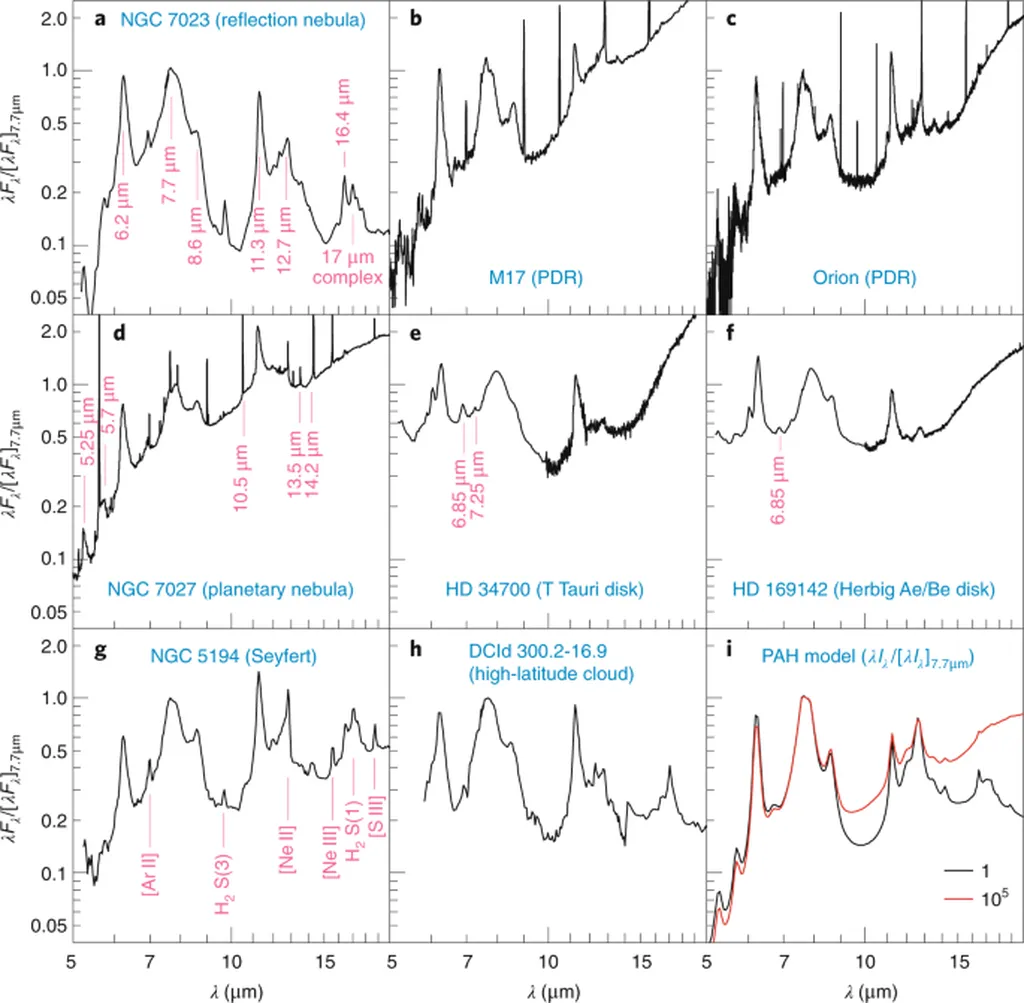In the realm of energy journalism, it’s crucial to stay abreast of scientific research that could potentially impact the energy sector. A recent study, led by Jaeyeon Kim and colleagues from the Max Planck Institute for Astronomy and other institutions, has delved into the correlation between polycyclic aromatic hydrocarbon (PAH) emission and CO(2-1) emission in galaxies, using data from the PHANGS-JWST and PHANGS-ALMA surveys. Their findings, published in the Astrophysical Journal Letters, offer insights that could have implications for understanding the interstellar medium (ISM) and, by extension, the energy processes within galaxies.
The study focuses on the relationship between PAH emission and CO emission, which is typically tightly correlated. However, the researchers identified localized regions in 20 out of 70 galaxies where this correlation breaks down, with CO flux exceeding that predicted from 7.7μm PAH emission by more than tenfold. These outlier regions are predominantly located in galaxy centers and bars, areas devoid of massive star formation.
To understand this discrepancy, the researchers explored two scenarios: suppressed PAH emission or enhanced CO emissivity. They examined PAH emission in other bands (3.3μm and 11.3μm) and dust continuum-dominated bands (10μm and 21μm), finding consistently high CO-to-PAH (or CO-to-dust continuum) emission ratios. This suggests that 7.7μm PAH emission is not particularly suppressed. While they noted slight differences in PAH size distributions and the spectral energy distribution of the illuminating radiation in some outlier regions compared to control regions, no consistent trend emerged.
The key finding of the study is that the outlier regions generally exhibit higher CO velocity dispersions. This increase in CO velocity dispersion may lower CO optical depth and raise its emissivity for a given gas mass. The researchers propose that shear along the bar lanes and shocks at the tips of the bar could elevate CO emissivity, leading to the breakdown of the CO-PAH correlation.
For the energy sector, understanding the ISM and the processes within galaxies is fundamental. The study’s findings contribute to our knowledge of the physical conditions and processes in the ISM, which can influence star formation and, consequently, the energy output of galaxies. This research, published in the Astrophysical Journal Letters, highlights the importance of continued exploration and investigation into the complex interplay of factors that govern the energy dynamics of the universe.
This article is based on research available at arXiv.

